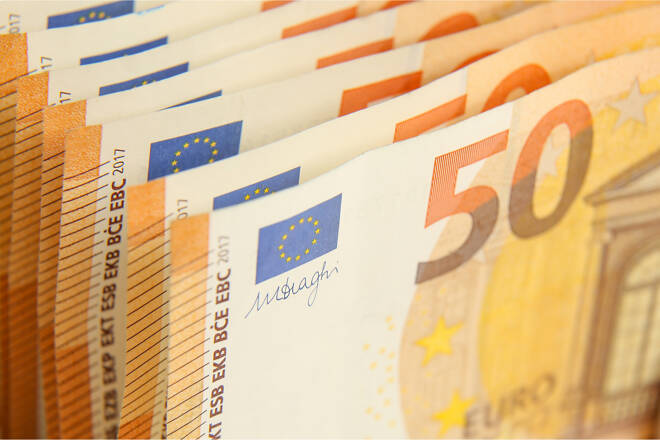Advertisement
Advertisement
EUR/USD: Global Borrowing Costs Surge, Putting Pressure on Fed, ECB
By:
EUR/USD at center stage as upcoming interest rate decisions by Fed and ECB shape market expectations amid rising borrowing costs.
Highlights
- Euro remains resilient despite trading near a three-month low.
- Bank of Canada and Reserve Bank of Australia raise rates, signaling ongoing global surge in interest rates.
- Focus shifts to upcoming interest rate decisions by Federal Reserve and European Central Bank.
Overview
The EUR/USD is displaying resilience despite trading near a three-month low. The euro experienced a modest uptick following the Bank of Canada’s unexpected interest rate increase, which suggests that other central banks, including the Federal Reserve, may need to address inflation concerns. This development solidifies the euro’s position as the most actively traded currency pair globally.
Global Surge in Interest Rates
The U.S. dollar initially faced pressure but quickly rebounded against the euro, Japanese yen, and Australian dollar after surprise rate hikes by the Bank of Canada and Reserve Bank of Australia. Rising borrowing costs indicate ongoing global interest rate surge. Concerns of overheating economy and inflation led Canada to raise rates to a 22-year high.
Central Bank Actions Prompt Reassessment
The actions taken by the Bank of Canada and the Reserve Bank of Australia have prompted traders to reassess their expectations and question whether the U.S. Federal Reserve will conclude its rate hike cycle before the European Central Bank. Both the Federal Reserve and the European Central Bank are scheduled to announce their interest rate decisions next week. The upcoming U.S. inflation data will be crucial in determining whether the Federal Reserve proceeds with the anticipated rate hike this month.
US, Germany Yields Surge
Global borrowing costs, represented by U.S. 10-year Treasury yields, have surpassed 3.8% once again, and Germany’s 2-year yields briefly exceeded 3% for the first time since March. The rate hikes by Australia and Canada indicate that the Federal Reserve may feel compelled to implement further increases.
Market Awaits Fed, ECB Decisions
Market focus now turns to the upcoming interest rate decisions by the Federal Reserve and the European Central Bank. Derivative market pricing suggests a probability of the Federal Reserve maintaining rates with a chance of a 25 basis point increase. There is speculation about a potential increase in July as well. Meanwhile, the European Central Bank is expected to announce a 25 basis point hike this week, with further expectations of another increase in July.
Euro Resilient Amid Global Speculation
In summary, the euro has shown resilience against the U.S. dollar despite trading near a three-month low. The actions taken by central banks and the rise in global borrowing costs have sparked speculation about the trajectory of monetary policy in major economies. The focus now shifts to the upcoming interest rate decisions by the Federal Reserve and the European Central Bank, which will significantly impact short-term market expectations.
Technical Analysis
The EUR/USD is moving higher on Thursday by remains in a tight trading range and on the bearish side of 1.0807 (PIVOT). Prices have been trading flat all week with traders showing respect for the pivot as they await next week’s U.S. consumer inflation report on Tuesday and the Fed’s interest rate decision on Wednesday.
The inability to overcome 1.0807 (PIVOT) will signal the presence of strong sellers. This could trigger a resumption of the downmove with 1.0522 (S1) the next support target.
With the trend down, sellers are likely to come in on the first test of 1.0807 (PIVOT). However, overtaking it will indicate strong counter-trend buying with 1.0979 (R1) the next target.
| S1 – 1.0522 | PIVOT – 1.0807 |
| S2 – 1.0350 | R1 – 1.0979 |
| S3 – 1.0065 | R2 – 1.1264 |
For a look at all of today’s economic events, check out our economic calendar.
About the Author
James Hyerczykauthor
James Hyerczyk is a U.S. based seasoned technical analyst and educator with over 40 years of experience in market analysis and trading, specializing in chart patterns and price movement. He is the author of two books on technical analysis and has a background in both futures and stock markets.
Advertisement
